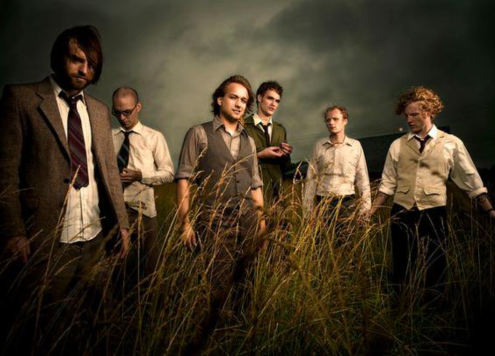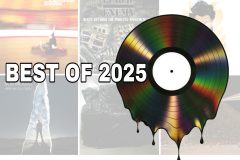A Baptism in Armageddon
by J. Alisa Sanders
The History, Tradition and Contradictions of the World’s Biggest Street Festival
For four to seven days before the obligatory abstinence of Lent begins, the world as you know it will comes to a halt: businesses shut and board their doors, cars vacate the streets and buses will run much slower than usual. Some with the means will leave their metropolitan penthouses for distant beaches where they will wait out the ensuing chaos, but for those deciding to stay, make sure that you’ve stocked up with plenty of provisions of the alcoholic and prophylactic kind. Now you are as prepared as you can be to experience the world’s largest urban music and cultural festival: Brazilian Carnival.
Carnival in Brazil is something of an annual baptism in Armageddon, a release valve officially sanctioned by the Catholic Church several centuries after Christ (too bad that He missed it). The doubtful and conservative among you should know that Carnival embraces the very core principles of religion: life, happiness, faith, hope and love — of the brotherly and other types.
“Carne levare,” Latin for “to abstain from the flesh,” was the name the Catholic Church gave to the pagan rituals that marked the end of winter and paid homage to nature deities by celebrating pleasure and fertility. In co-opting the Pagan celebrations, after centuries of failed efforts to eradicate them, the church conveniently placed the new holiday just before the beginning of Lent, reasoning that it would lesser alienate new converts and purge communal sins before plunging the population into 40 days of abstinence.
By the Renaissance, Carnival had become highly stylized in the courts of Western Europe’s capitals. Grand balls were held where masked guests drank, ate and danced, all the while hiding their identities and consciousnesses. But on the streets of Europe, Carnival took on a much different form where all manners of chaos and debauchery were encouraged.
In the early 17th Century, Carnival saw its way into Portugal’s western-most colony. While the regional nobility did its best to replicate the spectacle and opulence of their motherlands courts, the most prevalent form of Carnival in colonial Brazil was the entrudo or the chaotic street Carnival of the masses.
How, did such divergent practices as an imitation of posh merriment and chaotic street carousing morph in the highly organized and grand production that is Brazilian Carnival today? The key ingredient that would transform Brazil’s Carnival into the world’s most famous was the introduction of African music and dance.
“The Samba is the father of pleasure…
The Samba is the son of pain.
The great power of transformation.”
From singer Caetano Veloso’s song “Desde que o Samba É Samba”
One cannot speak of the evolution of Carnival without speaking of Samba – the music that is most quintessentially Brazilian. And one cannot speak of Samba without speaking of Bahia, cradle of the genre and first landing site of the Portuguese in the New World in 1500 AD. The city of Salvador, at the mouth of All Saint’s Bay, became Brazil’s colonial capital while the lands bordering the bay’s perimeter (the Recôncavo) housed plantations worked by African slaves. These slaves integrated their separate ethnic, religious and cultural traditions into an African-Brazilian culture peppered with indigenous and European elements. In much the way Jazz was born of the improvisational melding of African rhythms and musical forms with African-American interpretations and recreations of European musical traditions, so the Samba developed as a unique agglomeration of Bantu, Yoruba and Portuguese musical styles to create a truly Brazilian form of music.
By the late 19th century, Brazil’s governmental and commercial capital had shifted to Rio de Janeiro, bringing migrations of both slaves and free-blacks. There the original samba-duro of the Recôncavo would continue its evolution in the hands of musicians from Bahia and Rio. And in just 50 years, samba would bring together the elite and the masses in a manifestation of carnival unique in all the world.
Tia Ciata and the Birth of Rio de Janeiro’s Samba Schools
In the 1870s, Rio’s ballrooms filled with aristocrats dancing polkas and waltzes during Carnival. The poor and the blacks of the city created their own interpretation of these festivities in groups called ranchos. Processions were organized around a theme or enredo and characters created in imitation of Rio’s upper-class imitating European aristocracy. The soundtrack to these processions mirrored the music of the day, but to the accompaniment of African percussion.
Samba didn’t find a proper home in Rio until the arrival of Hilária Batista de Almeida (Tia Ciata) from the Recôncavo town of Cachoeira, in the early 1900s. She set up a boarding house for Bahian men working on the docks who, in their free time, came together for impromptu parties/jam sessions. At Tia Ciata’s, the spontenaity, creative improvisation and rhythms of samba- duro from the plantation were introduced to music of the metropolis: marchinhas, maxixe (a type of Brazilian Tango) Polkas and Waltzes. Spreading from the docks to the precarious hillside communities (morros), samba became the music of black, urban Rio and was adopted by rancho processions for Carnival.
By the mid-1920s the ranchos had grown popular and prosperous. The participation of the upper-class in the rancho associations meant exclusion of the poor and blacks that had founded them. Those disenfranchised formed new Carnival associations with samba bands. One such group, Deixa Falar (Let Me Speak), met at a neighborhood school to rehearse and teach samba. They modified the percussion and instrumentation of samba and restructured the melody and lyrics around a theme (enredo), inventing the form most famous today: samba-enredo. In 1928 the group changed its name to Estação de Sá and became Rio’s first Samba School. Soon the major morros (hillside neighborhoods) and other black neighborhoods of Rio like Mangueira and Portela would establish their own samba schools to participate in Carnival.
In the neighborhoods of Rio’s poor and disenfranchised, the samba schools’ allegories were developed into grand spectacles and the communities’ best artists were encouraged to create audaciously. An entire corps of hundreds of dancers, singers and percussionists was their canvas to bring to life. Washer women and nannies, stevedores and day laborers, janitors and maids for 360 day of the year; during Carnival they were transformed into the kings and queens of the city. Their was transformation was so splendorous that Rio’s upper-class abandoned their balls to watch the parade of the samba schools. The carnival of the docks and favelas of the city came to represent Carnival for all of Rio.
Bahia: Carnival of the Masses Transformed
While Rio’s samba schools began on the street, the size of the spectacle made it necessary to move them to the Sambadome – an open air parade stadium build near the city center. This leaves the title of Brazil’s biggest and most famous street Carnival to Salvador, Bahia where blocos (huge groups of fans that follow music groups through the streets) of Axé, Afro and Pagode music, afoxés and even samba schools dance, sing and play their way through the sinuous streets of the city center and beach promenades.
In 1884, the Red Cross Carnival Club organized a European court style procession of lavishly costumed merrymakers and horse-drawn carriage floats. They were met with delight by those on the street and showered with rose petals. Rival clubs took up the call and the next year the Fantoches Carnival Club organized their procession. With the success of both high-society clubs on the streets, other clubs joined in and for the first time in the history of Brazil’s carnival, middle-class and rich revelers brought their festivities into the streets for all to see.
In 1894, six years after the abolition of slavery, Salvador’s black population organized their own carnival groups around African themes. The “African Embassy” was the first afoxé, a carnival association closely connected with the Candomblé religious houses and traditions of the Afro-Bahian community. The revelers dressed in African clothes and adornments, singing and playing percussion to ijexá rhythms in the black enclaves of the city center. Through the years more afoxés organized, from small community based ones to huge, citywide associations like the 10,000 member strong Filhos de Gandhi (Sons of Gandhi). Bahia’s street carnival grew in numbers and in popularity, but was always segregated until 1950 and the invention of an amplified sound truck called the trio eletrico.
A guitar, wire, speakers and a ’29 Ford rigged together by radio technician Dodô and fellow musician/car mechanic Osmar resulted in the world’s first amplified stage on wheels. Osmar and Dodô took to the streets of the Salvador playing electric guitar on top of their electrified ’29 Ford to the elation of surprised crowds. Inviting another musician to join them on the Ford during the show they became known as the trio eletrico or “electric trio.” The next year the trio gained a commercial sponsor, bought a bigger truck, added lights, more speakers and decorations to their electrified vehicle. The rage caught on and more bands began to construct trio electricos providing themselves with moving sound stages for Carnival. Through the ‘60s and ‘70s social clubs still gave their parties and dances, samba schools and blocos de indio emerged and afoxés paraded, but the biggest draws were trio eletrico groups like Os Independentes and Amigos do Barão where anyone of any color or class with energy to brave the crowds could see big artists like Caetano Veloso, Gal Costa, Gilberto Gil and even Vinicius de Moraes for free.
Each decade brought a new wave of music, dance and innovation to Carnival in Bahia’s streets. 1974 saw the formation of Ilê Aiyê and the birth of the Afro bloco. Ilê’s objective was to create a new esthetic based on the African roots of Bahian culture. They took the percussion and ijexá rhythms of the afoxés and combined them with a modified samba-enredo to create a new style of music called samba-reggae. Community artists created fabric designs for the wraps, tunics and elaborate turbans that are Ilê Aiyê’s Carnival attire. Afro-Bahian composers entered city-wide competitions that determined the songs Ilê performed. The organization had a social agenda outside of Carnival week organizing educational programs, a school and black beauty contests in their neighborhood. Olodum, founded in 1979, took Ilê Aiyê’s model and created their own version, expanding samba reggae into a more pop style and bringing a battery of drums into the heart of Salvador’s Pelourinho district. In the late 80s/early 90s Olodum gained international fame by recording with Paul Simon and Michael Jackson. As the samba-reggae gained popularity and radio play, the avenues of Carnival opened up to the most popular Afro-blocos in prime time. Legions of fans in costume followed the groups trio-eletricos and accompanied corps of drummers dancing as they played.
Alchemical mixes of music styles continued to create new genres throughout the 80s and 90s as Bahia’s carnival gained fame nationwide. The blend of Bahian frevo with samba-reggae created the very pop axé music. The marriage of samba-duro, axé music and samba-reggae created Bahian pagode. Carlinhos Brown combined axé music and the rhythm of the timbau with Cuban musical influences in the group Timbalada. At the turn of the 20th century, Bahia’s street Carnival in size and spectacle was unrivaled by any other in Brazil.
From Apartheid in South Africa to Apartheid in Brazil
Rio Samba School Porto da Pedra lauded Nelson Mandela and the end of Apartheid in South Africa, while in Bahia, native son and musician Carlinhos Brown vehemently bemoaned the persistence of Apartheid in Salvador. Reaction ranged from shame to relief, to the desire to brush it all under the rug so as not to sully the coming celebration. But Carlinhos Brown said what no other artist as famous would risk his position on the national soapbox or with commercial sponsors of Carnival to say. Carnival is a grande display of the disparity between Brazil’s social classes and racial groups. The democratization begun with the samba schools and the trio eletrico has now lost ground to the commercialization of the festival. Today the queens of Salgueiro, Viradouro and many of Rio’s biggest samba schools are socialites, actresses or models who pay for the right to bare their glittered breasts. Tourists who don’t know samba from salsa pay hundreds of dollars for costumes to parade. Though Rio’s city government makes available reasonably priced tickets to watch the processions pass through the Sambadome, tourism agencies, consolidators and scalpers raise their prices exponentially. In 2007, tourists paid between $70 and $400 per person to enter the Sambadome, keeping in mind that minimum wage in Brazil is about $190 per month. After decades of missing out on the gravy train of ticket sales, record royalties, TV broadcasts, tourism profits and other earnings, the samba schools organized into the Independent League of Samba Schools (LIESA) to make sure that the samba culture would not be appropriated without providing a return for the artists and communities who produce the culture and performances. This money along with corporate sponsorships, provides for the administration of the samba schools and supports community social programs that many samba school associations like Mangueira’s have built to compensate for the lack of infrastructure and social services.
Unfortunately Salvador’s Carnival lacks not only LIESA’s cohesion and organization at the level of the music groups, but also financial support in government or private form. With an estimated price tag of $12.5 million in 2007 (40% paid by the city and state governments) only $2 million returned to the government on its investment. The bulk of the percent in profits from Carnival go to businesses and a handful of the city’s biggest musicians. Though local jobs are produced during carnival, they are precarious and low paying on whole. The large axé music blocos pay battalions of poor and generally black cordeiros to serve as informal security guards. They hold in place a thick rope as wide as the street and up to half a kilometer long so that inside official revelers, mostly not black or poor, who have paid up to $1000 to wear a t-shirt with the bloco’s logo, can dance, drink and cavort in relative comfort. With 2.5 million revelers participating in Salvador’s annual carnival, the cordeiros earning between $5 and 10 dollars a night, are human buffers between the paying and the non-paying crowds forced onto the narrow the sidewalks as the bloco lumbers by.
Poor families from distant suburbs set up shop for 7 days along Salvador’s Carnival routes. Rigging make-shift booths or snaking through the crowds avoiding brawls, trampling by passing blocos, and police storm troopers, they sell drinks and junk food. Those who have no product to sell can sell themselves. Sex tourism remains rampant during Carnival to the chagrin of the local government. At dawn, when the streets empty of revelers, come the men, women and children who collect cans, plastic bottles and cardboard to recycle for cents on the pound. Tired children sleep on sheets of cardboard in the shadow of temporarily boarded storefronts. Buy noon, when the temperature has soared to the high 90s and to post partiers nurse their hangovers on the beach, itinerate venders traverse kilometers of hot sand to sell sunscreen, sunglasses, CDs, snacks and beach-ware.
10 years ago if you didn’t want to pay to party inside of the bloco’s ropes, you could still join in the ranks of pipoca (so named because from on top of the 20 foot trio-electrics, the jump-up dancing of the people outside of the ropes looked like popcorn popping) . Now the proliferation of camarotes (VIP clubs set on metal supports above the sidewalks or in luxury apartments, restaurants and bars along the parade route) has compromised the little public space for pipoca that remains. As they grow in popularity, the camarotes have changed the dynamic of Salvador’s carnival moving it from the street back indoors. Revelers watch the procession pass below in climate-controlled comfort while dining, lounging, enjoying massages and spa treatments organized by the corporations who once paid the Carnival musicians. At several hundred to several thousand-dollar to enter, camarotes are spaces for the Brazilian and foreign elite.
Some suggest camarotes owners should pay for the use of public space and pay the artists on the street for providing the entertainment. In the interim, some of Salvador’s big artists have created independent blocos– without the ropes that exclude the general public. In the case of Margareth Menezes, a favorite of Salvador’s bohemian, artistic and gay revelers, you don’t have to pay for an official t-shirt, but should create your own costume to dance in along the parade route. Singer Carlinhos Brown devised two alternative in 2007: an independent bloco called Pipoção (big popcorn) featuring himself as the main artist and distributing 30,000 free popcorn kernal hats; and the Museum of Rhythm.
Brown’s Museum of Rhythm took up residence in the Salvador’s restored 19th century Gold Market. Two stages hosted shows by top performers like Daniela Mercury and Brown’s own Timbalada. It also showcased music from artists not usually heard during Carnival like the rock group Pity, electronic music DJs and Frevo Music legend, Mestre Duda. Tickets, full-priced at $30, were more accessible to the general public than most camarotes or axé music blocos. In addition to creating a memorial to Bahian Carnival and culture, the Museum of Rhythm provided a creative and innovative alternative to Carnival on the Avenue where all ages, social and economic groups could party in safety and comfort.
If you thrive in the conundrum of Carnival – to sleep during the days and come alive at night like an urban vampire, to frolic in the streets. If you enjoy the spectacle of glittered brown bellies under undulating hips atop Samba School floats, while acknowledging the inequality that thrives amongst displays of opulence. And if you appreciate the divine comedy and tragedy that plays out annually in the streets of Brazil’s metropolises, like an urban version of ancient Greek theatre, then your baptism is complete. For it is profoundly inspiring to watch an entire society transform its maladies into the world’s biggest celebration of life. While it’s not prudent nor just to ignore the poverty, violence and inequality that exist intensely within Brazilian society, we would be wise to honor the strength and beauty of the Brazilian soul that continues to be inspired, perhaps by adversity, to celebrate life. Some rightly argue that Carnival distracts Brazil from dealing with its problems, providing a panacea for the public and inducing temporary amnesia. Perhaps the solution is not to condemn Carnival, but to see it as a tool of transformation through celebration. For on the day that Carnival can be enjoyed equally by all Brazilians, the country will truly have purged all of its sins and cured its own ills to become a model not only for celebration, but for inspiration around the world.








Social Media